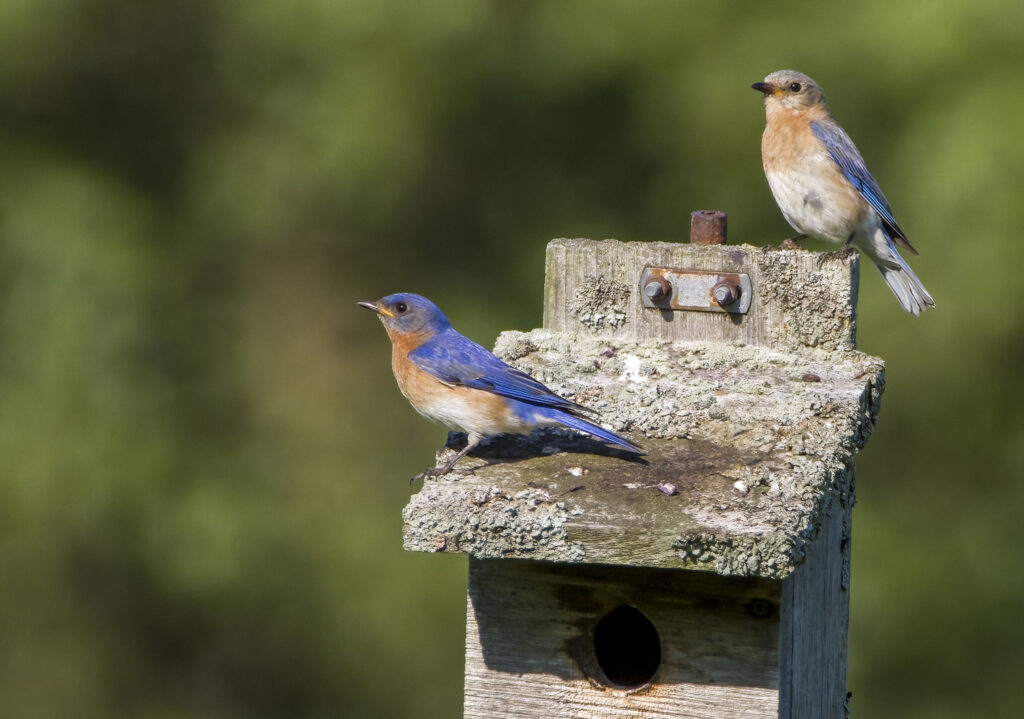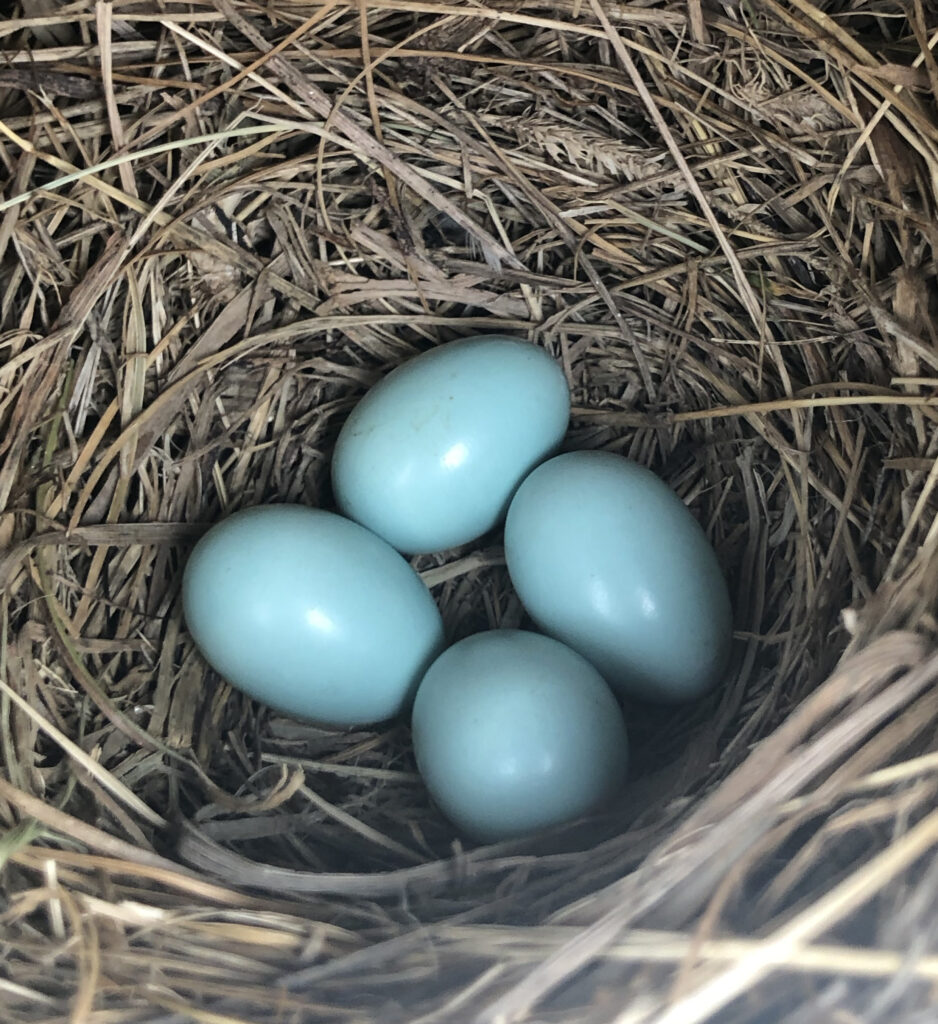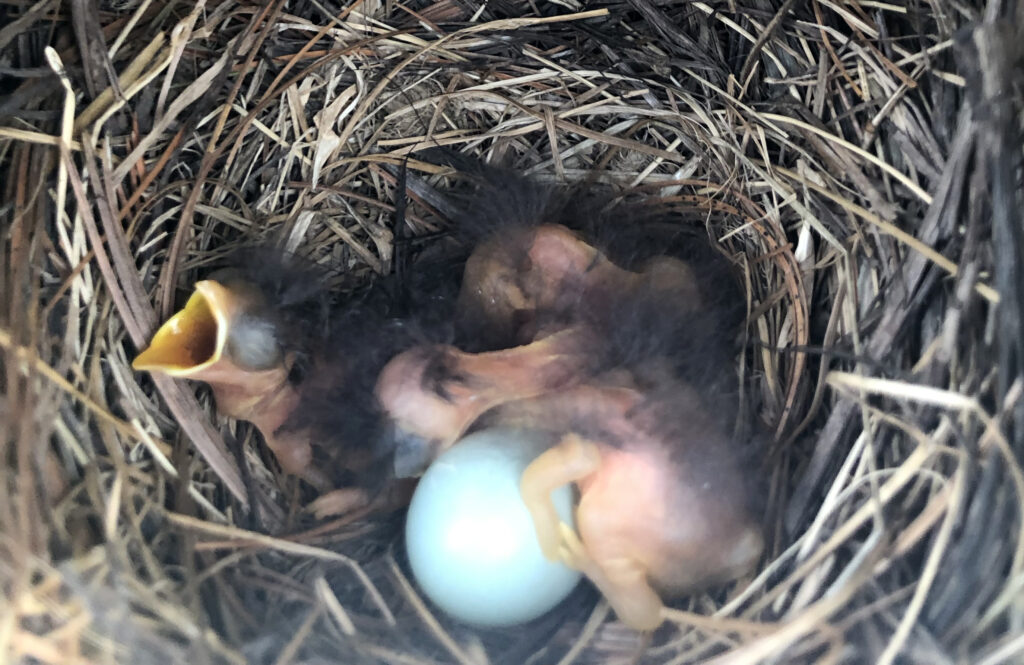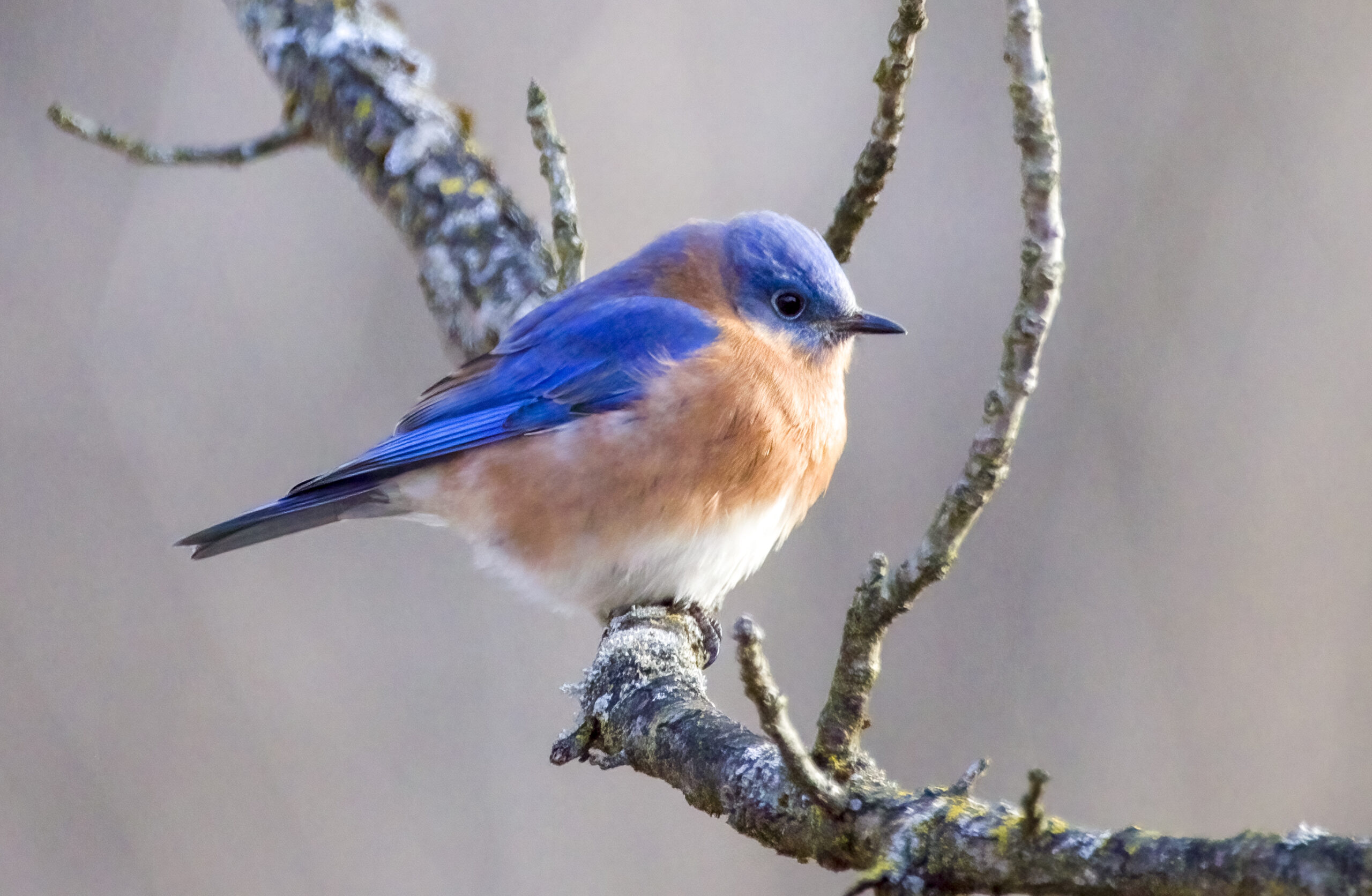Once threatened by pesticides and habitat loss, the eastern bluebird (Sialia sialis) is recovering in Niagara, thanks in part to hard work by dedicated volunteers maintaining nesting boxes for these beautiful birds.
COVER PHOTO: Eastern Bluebirds can now be seen year-round in Niagara; this male was observed in Short Hills Provincial Park in January 2021.
The eastern bluebird is a member of the thrush family, which also includes the familiar American robin. Both sexes have a rusty orange chest, blue wings, head, and back. Females have softer, muted colours but otherwise resemble males. They mainly feed on arthropods, including crickets, beetles, and even gypsy moths. In winter, they also eat berries.
On July 10, I met with Alicia Aitchison, president of the Niagara Bruce Trail Club and secretary of the Friends of Short Hills, to learn more about the local nesting box program. Alicia leads a team of volunteers who manage 120 boxes in prime habitats in Short Hills Provincial Park.

“People have been doing these boxes since the 1950s,” said Aitchison. In the 1990s, local nature enthusiasts Felix Ventresca and Aurelio Munoz proposed a bluebird box program to the Friends of Short Hills. Volunteers built and installed bluebird boxes along a trail and carefully monitored and maintained them for years.
Due to a shortage of volunteers, the boxes were not maintained some years. “The last year monitoring data was submitted was 2015,” said Aitchison, who restarted the program in 2020. “When the boxes were cleaned out in the winter, they were very full of wren and house sparrow nests. Hopefully, future years will be easier with them cleaned out.”
“We’ve had over 100 successful tree swallow fledglings and 80 bluebird fledglings this year, and nine nests are still on the go, so that’s up to 36 more bluebirds,” stated Aitchison. “I think next year we’ll be even more successful.”

Bluebirds faced declining numbers in the early 1900s from habitat loss, competition from introduced species (including the common starling and house sparrow), and pesticide use. Conservation efforts were launched in the 1930s, and a National Geographic article in 1977 helped spread awareness of the bluebird’s plight. “Bluebirds were a species at risk in the 1980s and have recovered since 1996,” added Aitchison.
The nesting box program has been a boon to another bird, the tree swallow (Tachycineta bicolor). Tree swallows compete with bluebirds for solitary nesting boxes, so boxes are always placed in pairs. “If you put them in pairs, they nest happily side by side,” said Aitchison. “The ideal pairing is bluebirds in one and tree swallows in the other.”
Bluebirds nest from April through August, and Aitchison’s team revisits each box, looking for occupants. We checked two successful nesting boxes — one with three hatchlings and one unhatched egg, the other with four eggs.

“Bluebirds and tree swallows are very tolerant of opening the nesting boxes,” explained Aitchison. “We have to monitor them at least once a week or else we are just making habitat for house sparrows and other potential issues,” she added.
House wrens (Troglodytes aedon) are one of the main threats to bluebirds. They may kill hatchlings, destroy unhatched eggs, and fill up empty boxes with twigs to prevent other birds from nesting.
Aitchison said the best way to battle house wrens is relocating the nesting boxes out of wren territory. “House wrens like trees and coverage,” she explained, while bluebirds tend to prefer open meadows without heavy tree cover. “We’ve tried relocating some nesting boxes this year and it’s helped.”
There are other ways to protect active bluebird nests. Wren guards are simple metal covers which conceal the entrance of a box. “As soon as we find eggs, we install one of these wren guards,” Aitchison said. Otherwise, she said, “wrens fill it with sticks, even throw out baby hatchlings. If the wrens don’t see the bluebirds going in and out, they may not enter the nesting box.” After their young have hatched, the guards are removed
“We also built house sparrow scarers which we put on top of the boxes. It’s a piece of metal with some streamers,” she stated.

Some insects also threaten bluebird hatchlings. “Ants have been a problem. We are using mint to battle that,” Aitchison explained. “We’ve learned that mint works really well in repelling the ants. It’s all been learning on the go.”
“The monitoring is really important,” she said, but the frequent monitoring can exact a toll on volunteers who must hike long distances and risk exposure to ticks. For Aitchison, though, the rewards are worth it. “When you anecdotally compare walking here 10 years ago, I didn’t see this quantity of bluebirds.”
“The program in Short Hills Park has been very successful.”
If you are interested in helping, and aren’t averse to ticks, volunteers are always welcome. Contact Alicia Aitchison at aliciaaitchison1@gmail.com for information.
